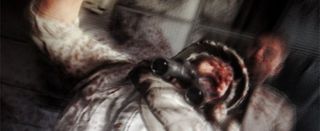Can you tell Battlefield 3 from real war?

With ITV mistaking games footage for video evidence of terrorists attacking planes and the BBC mistaking a logo from Halo for a genuine UN flag , the boundaries between the real and the virtual are getting interestingly blurred – although not, curiously, by people who actually play a lot of games . Accidents like the BBC and ITV incidents happen, but intentionally confusing games for reality is still rare. Unless you're Sam Orchard, a photography student from Falmouth College hopes.
He's taking screenshots to the art world, with a project called ' Uncanny Valley ' which will be exhibited at the Truman Brewery in London. In it, he uses shots from Call of Duty and Battlefield 3 to “question the validity of the perceived 'real' war photograph”.
I contacted Sam to ask him how he captured the images, thinking there'd be some sort of free camera mod with heavy PhotoShopping involved to let him get the pictures he wanted, some of which are very close to award winning pictures from recent conflicts. Stupid me – his technique was to point a camera at the screen while playing. Tricky to do, but he is a photographer after all.
War photography and the images of war is a difficult subject to tackle – on the one hand, it might seem facile to challenge photojournalists and reporters who risk their lives to bring back stories from warzones with pictures from videogames. On the other, their work is so important that it needs challenging regularly – at its worst, it becomes a process for satisfying the aesthetics of the image rather than the documentary truth of a situation.
“Some of the most celebrated war photographs of all time (Roger Fenton's ' Valley of the Shadow of Death ' - 1855, Robert Capa's ' Falling Soldier ' - 1936) were the result of ethically debatable degrees of representationalism or even straight forgery, using the perceived infallibility of the war photograph to mould the author's own agenda around the image.” says Orchard, “This ranged from moving aspects of the scene to benefit the final aesthetic of the photograph (Fenton), or actually staging soldiers being shot to create an iconic image (Capa).”

There have been many more recent examples of photographers seeking a “front page shot”, says Orchard, who believes that an “iconic documentary image should be incidental, not constructed”.
“By mimicking the role of a war photojournalist and imitating the aesthetic conventions of the archetypal war photograph,” he says, “I aimed to plant a seed of doubt within the viewer's mind - causing them to question not only my images, but other subsequent 'real' images of war. This process of creating an awareness to the potential of deception within the war photograph would therein challenge the working ethos of the war photojournalism industry and its supposed purveyance of truth.”
Comic deals, prizes and latest news
Sign up to get the best content of the week, and great gaming deals, as picked by the editors.
Le Show – which features collections from the Falmouth course, most of which have nothing to do with games of course - runs from 21st to 26th June. Image credits and copyright Sam Orchard.
(Via Duckrabbit )
Most Popular

